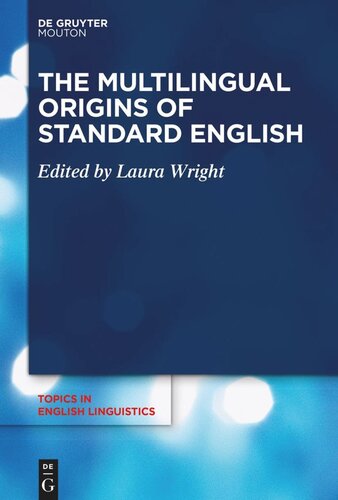

Most ebook files are in PDF format, so you can easily read them using various software such as Foxit Reader or directly on the Google Chrome browser.
Some ebook files are released by publishers in other formats such as .awz, .mobi, .epub, .fb2, etc. You may need to install specific software to read these formats on mobile/PC, such as Calibre.
Please read the tutorial at this link: https://ebookbell.com/faq
We offer FREE conversion to the popular formats you request; however, this may take some time. Therefore, right after payment, please email us, and we will try to provide the service as quickly as possible.
For some exceptional file formats or broken links (if any), please refrain from opening any disputes. Instead, email us first, and we will try to assist within a maximum of 6 hours.
EbookBell Team

0.0
0 reviewsTextbooks inform readers that the precursor of Standard English was supposedly an East or Central Midlands variety which became adopted in London; that monolingual fifteenth century English manuscripts fall into internally-cohesive Types; and that the fourth Type, dating after 1435 and labelled ‘Chancery Standard’, provided the mechanism by which this supposedly Midlands variety spread out from London. This set of explanations is challenged by taking a multilingual perspective, examining Anglo-Norman French, Medieval Latin and mixed-language contexts as well as monolingual English ones. By analysing local and legal documents, mercantile accounts, personal letters and journals, medical and religious prose, multiply-copied works, and the output of individual scribes, standardisation is shown to have been preceded by supralocalisation rather than imposed top-down as a single entity by governmental authority. Linguistic features examined include syntax, morphology, vocabulary, spelling, letter-graphs, abbreviations and suspensions, social context and discourse norms, pragmatics, registers, text-types, communities of practice social networks, and the multilingual backdrop, which was influenced by shifting socioeconomic trends.